It’s one of the most popular pieces of legislation in Washington despite, or perhaps because of, the fact that it does not exist.
President Trump’s $1 trillion infrastructure proposal piqued the interest of opponents and allies alike last month during his joint address to Congress, just as it did following his election win in November. But it’s been more than four months since Trump won the presidency and more than two months since he took the oath of office, and despite the potential popularity of an infrastructure bill, no one seems to know what the White House plans to do.
Analysts, lobbyists and congressional aides told the Washington Examiner that any massive infrastructure bill won’t happen right away. While the defeat of the GOP’s healthcare bill on Friday could allow the infrastructure package to be developed sooner than previously thought, it’s widely believed that tax reform is next up on the docket for Trump and Congress. Infrastructure, meanwhile, is considered a possible olive branch between warring faction in Congress, but as of yet no specifics have been developed.
That means a major package involving infrastructure spending might — might — be on the docket by September. But, fights in other areas could end up pushing it into 2018, where it may become wrapped up in election-year politics.
“Generally speaking, what [House Transportation and Infrastructure Committee Chairman Bill] Shuster has talked about … timing recently is most likely you’ll start to see something maybe this summer or into the fall,” said a House aide. “His hope is to act later this year.
“I don’t think you want to get too far down the road, because the closer you get to any election things get a little tighter.”
That elongated timeline and a lack of specifics coming from the White House, which is taking the lead on formulating the package, means many interest groups are stepping up their efforts to make sure their priorities end up in the proposal. There’s a $1 trillion turkey in the oven, and a broad spectrum of industry lobbyists are lining up to get their slice.
Among all the interests, from bridges to railroads and highways, airports will most likely be the first to the table since authorization of the Federal Aviation Administration expires in six months.
Lawmakers form their goals
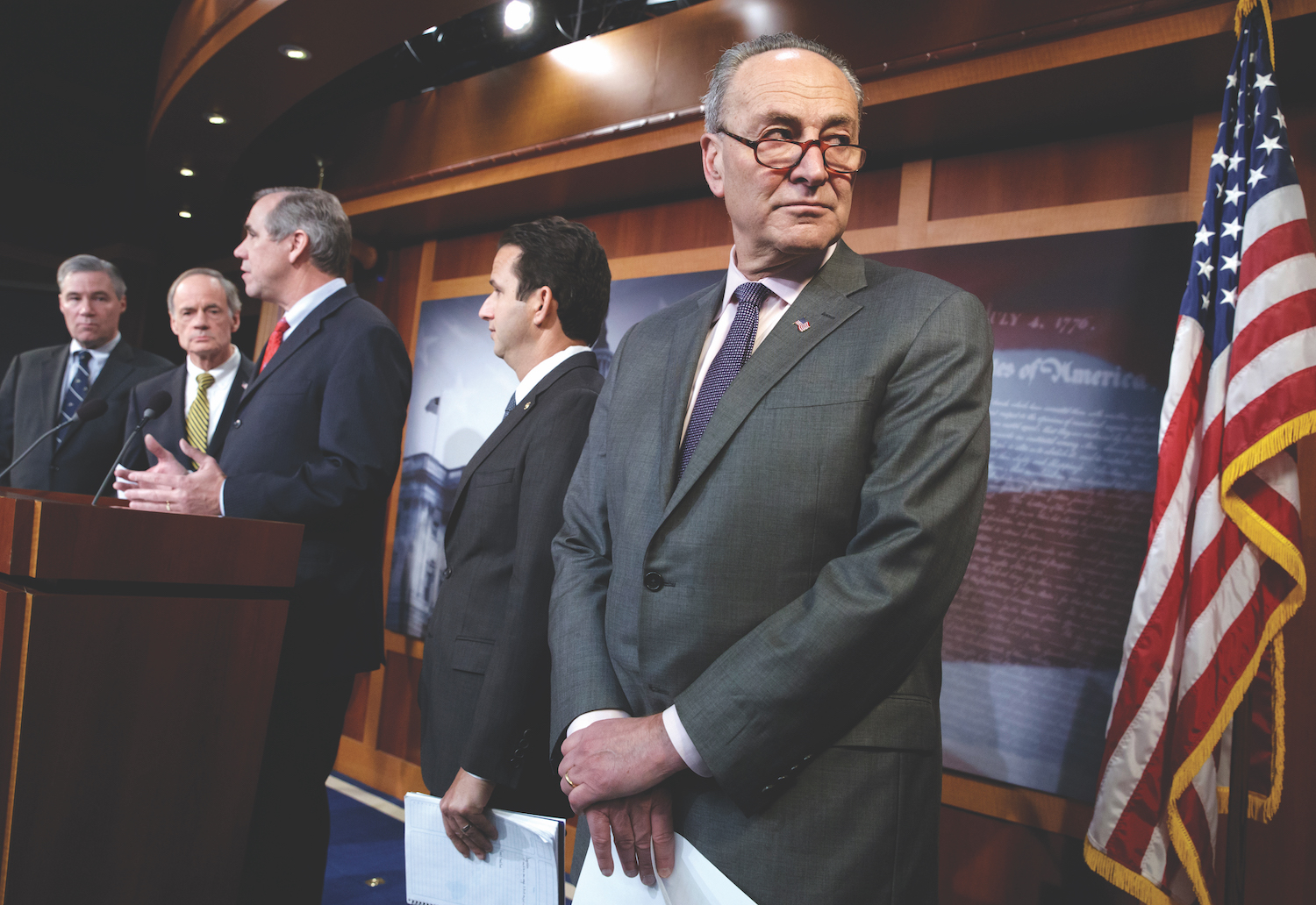
Senate Minority Leader Chuck Schumer said following Trump’s win that he could see working with the president on an infrastructure bill, and Senate Democrats subsequently released their own $1 trillion plan. (AP Photo)
Infrastructure spending is considered one of the only areas Republicans and Democrats can come together in Congress, and there’s been an air of hopefulness around Trump’s policy since November.
Senate Minority Leader Chuck Schumer said following Trump’s win that he could see working with the president on an infrastructure bill, and Senate Democrats subsequently released their own $1 trillion plan. While no one believes that plan will be the basis of the White House proposal, it shows Democrats want a seat at the table, too. On this issue, they have not kicked over their chair and walked out of the room in a huff.
But the table is still mostly empty.
“Folks are still in the developmental process,” the aide said. “From what I can tell, that goes for the administration and all the folks they have working on it.”
Related Story: http://www.washingtonexaminer.com/article/2618338
Shuster has met and talked with administration officials and will continue to do so. D.J. Gribbin, special assistant to the president for infrastructure, and Gary Cohn, a former Goldman Sachs president now leading Trump’s National Economic Council, are said to be the leading infrastructure voices in the administration along with real-estate developers Richard LeFrak and Steven Roth.
Transportation Secretary Elaine Chao is expected to be involved in the formulation of the bill as well, but she’s still staffing her agency.
Neither the White House nor Transportation officials would comment for this report.
Shuster doesn’t want a massive amount of direct investment from the federal government, but does want to develop a way to promote private investment in many different types of infrastructure.
“If you can provide regulatory reform and process streamlining and cutting red tape, that can unlock private investment,” the aide said. “That’s infrastructure investment, too.
“Shuster lately has mentioned pipeline projects in Pennsylvania. There’s not one federal dollar involved there. These are private ventures, but they’re sort of locked up right now awaiting some federal approvals. But, if you can spur that kind of development that’s purely private sector, that can be a part of the puzzle too.”

Cummings said spreading access to broadband Internet in Appalachia is not only an opportunity to expand Internet access, but could also help the economy of towns and cities decimated by the collapse of the coal industry. (AP Photo)
Democrats on the House Transportation and Infrastructure Committee are, however, wary of giving too much influence to the private sector.
Rep. Elijah Cummings, D-Md., said Democrats want the federal government directly involved in infrastructure spending.
“I know he’s trying to do public-private [partnerships] and I understand that,” Cummings told the Washington Examiner. “But, at the same time, I don’t want a situation where we’re just investing in toll roads and then the private industry then owns the roads and jacks up the prices of tolls. That’s the last thing we need.”
Cummings said spreading access to broadband Internet in Appalachia would be a priority for committee Democrats as well. It’s not only an opportunity to expand Internet access, but could also help the economy of towns and cities decimated by the collapse of the coal industry.
“Broadband is something some of those coal miners can perhaps be retrained [to work on] or people whose jobs have disappeared because of automation and technology,” he said. “We need to try to figure out how we can use the public resources to help those people get back to work and at the same time rebuild our country.”
Related Story: http://www.washingtonexaminer.com/article/2618341
On the other side of the Capitol, Senate Environment and Public Works Committee Chairman John Barrasso is one of the main power brokers for that chamber’s work on any infrastructure package.
Barrasso, R-Wyo., has held hearings on infrastructure since taking over the committee in January and counts that as one of the top areas he and Delaware Sen. Tom Carper, the top Democrat on the committee, can work together.
The Wyoming Republican’s foremost concern is improving the infrastructure in rural areas.
“Rural projects are a priority. What affects rural areas will also affect the rest of the country,” Barrasso said in an email.
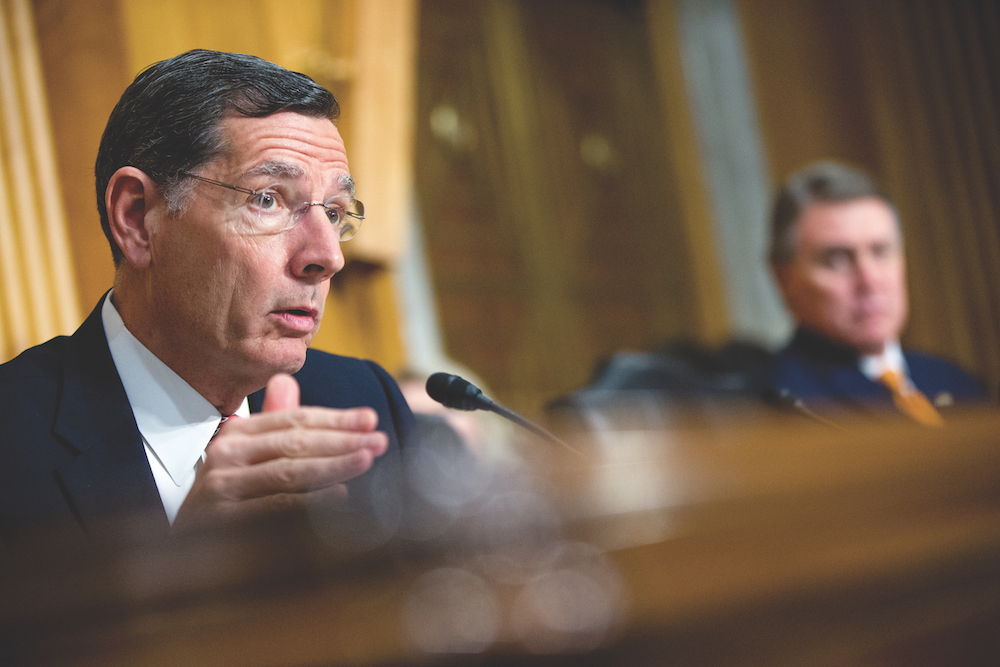
On the other side of the Capitol, Senate Environment and Public Works Committee Chairman John Barrasso is one of the main power brokers for that chamber’s work on any infrastructure package. (AP Photo)
“Roads stretching across rural states are widely used to transport goods to big cities on the coasts. Water systems in rural areas affect agriculture production, which feeds all of America. Federal funding doesn’t always make its way to smaller, more rural communities, and they must be a major part of whatever legislation is moved forward.”
Barrasso added that Republicans favor public-private partnerships to pay for infrastructure projects, but they’re not feasible for rural areas, he said.
“That certainly may be an innovative solution for cities with aging infrastructure, but it doesn’t work well for rural areas, like in my home state of Wyoming,” he said. “We need to improve access to federal grant programs for these communities, so that their needs can be met too.”
Senate Democrats, so far, are the only group of lawmakers with a written plan for the infrastructure bill.
Related Story: http://www.washingtonexaminer.com/article/2618318/
The 11-page document proposes spending $210 billion on roads and bridges; $100 billion to revitalize towns, both rural and urban, to allow communities to “rethink their downtowns”; expanding the TIGER grant program that allows municipalities to invest in road, mass transit, rail and port projects; spending $110 billion on water and sewer system upgrades; spending $180 billion on rail and bus mass transit systems; and spending $10 billion on Department of Veterans Affairs hospitals and other facilities, among many other proposals.
Michael Sargent, a policy analyst with the Heritage Foundation, said “it’s an unbelievable document” and would be “wasteful and counterproductive.” But, he added, it could be a smart play by Democrats.
“It could force the president’s hand,” he said.
“Especially on the Republican side, they’re looking for the administration to take the lead on this because no one really wants to put their name on the bill. They just want to get the benefits from this.”
Filling the vacuum
While Capitol Hill waits for the White House to make a move, lobbyists are making sure the administration and lawmakers alike hear their priorities.
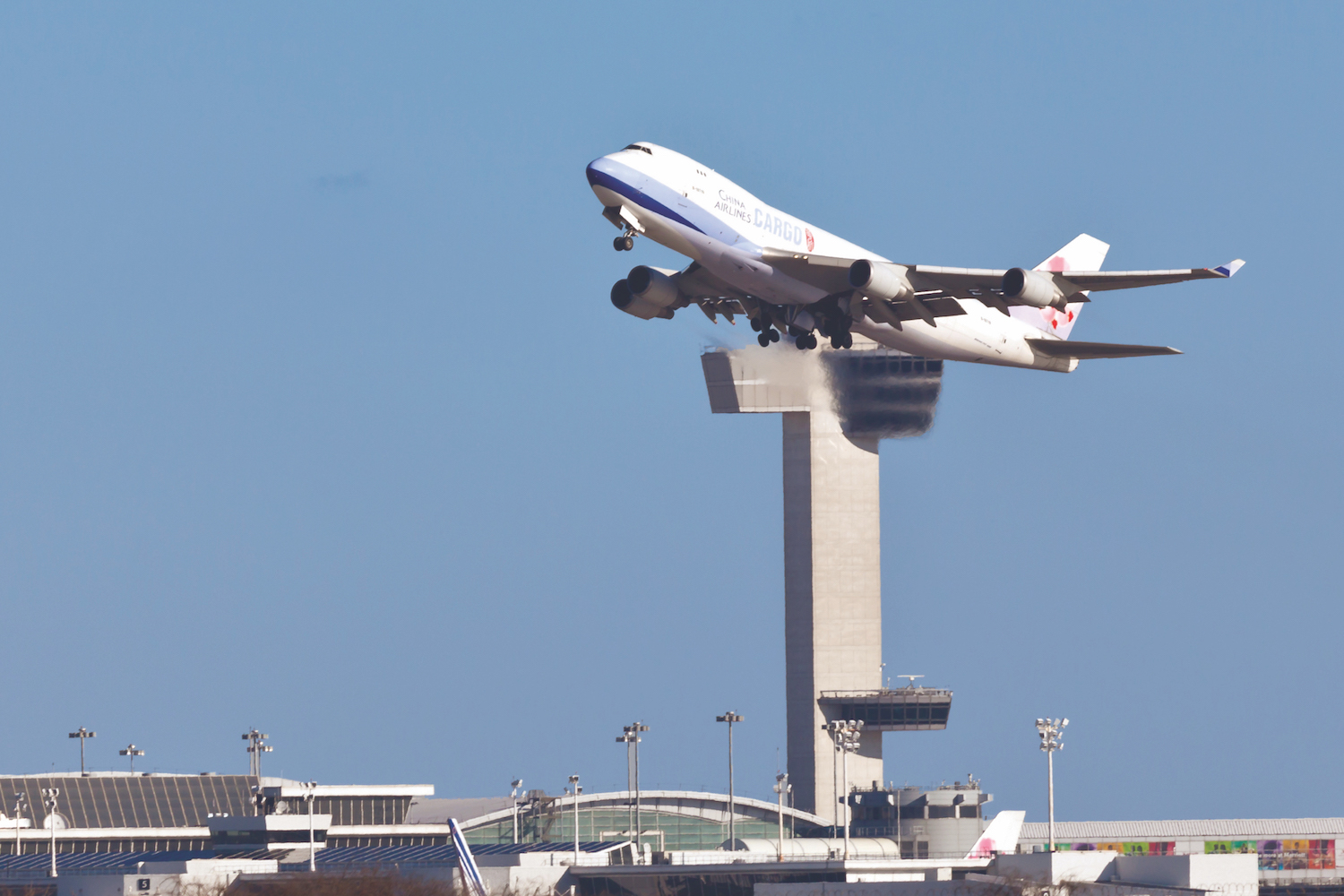
Major airlines have pushed for a private and independent company to remove some bureaucracy from the FAA. (AP Photo)
At this point, there is only one nailed-down timeline in the infrastructure arena, which is that authorization for the Federal Aviation Administration expires at the end of September. That puts airports and air travel at the forefront of discussion.
Vaughn Jennings, spokesman for Airlines for America, which advocates for 10 airline companies, said privatization of the nation’s air traffic control system is the top priority for his group.
Major airlines have pushed for a private and independent company to remove some bureaucracy from the FAA. Opponents argue it’s a boondoggle that would be a giveaway to unions that would organize the new body.
Privatizing air traffic control is also one of Shuster’s top priorities for the 115th Congress and something Trump has supported. That leads Jennings to hope privatization will be included in the final bill.
“Our nation’s ATC infrastructure in the sky is every bit as critical to our economy as roads, rail and bridges,” he said. “In fact, modernizing the [air traffic control] system and getting NextGen [a long-term initiative to modernize air traffic control] done would be our nation’s largest infrastructure project, and should be included in any infrastructure package that Congress considers.”
But when Trump was on the campaign trail, he didn’t pitch new air traffic control systems. He pitched improved roads, bridges, dams and levees, the kind of projects that people notice. They also appeal to his background as a real estate developer.
The American Society of Civil Engineers wants to see direct federal investment in those projects, particularly dams and levees Congress has already authorized. Brian Pallasch, managing director of government relations and infrastructure initiatives at ASCE, said funding those projects would be an uncontroversial way to get started.
“My sense is most of those projects have not seen funding. They were projects that were approved. You could fund those projects,” he said. “There’s a dam rehabilitation program, there’s a levee safety program.”
Pallasch added that Trump should break up the timing on the actual expenditure of the $1 trillion that the president wants in the eventual package. Spreading it out over 10 years with about $100 billion a year would be a better idea than simply approving $1 trillion in a single bill.
“The federal government needs to play a pretty strong role in this,” he said.
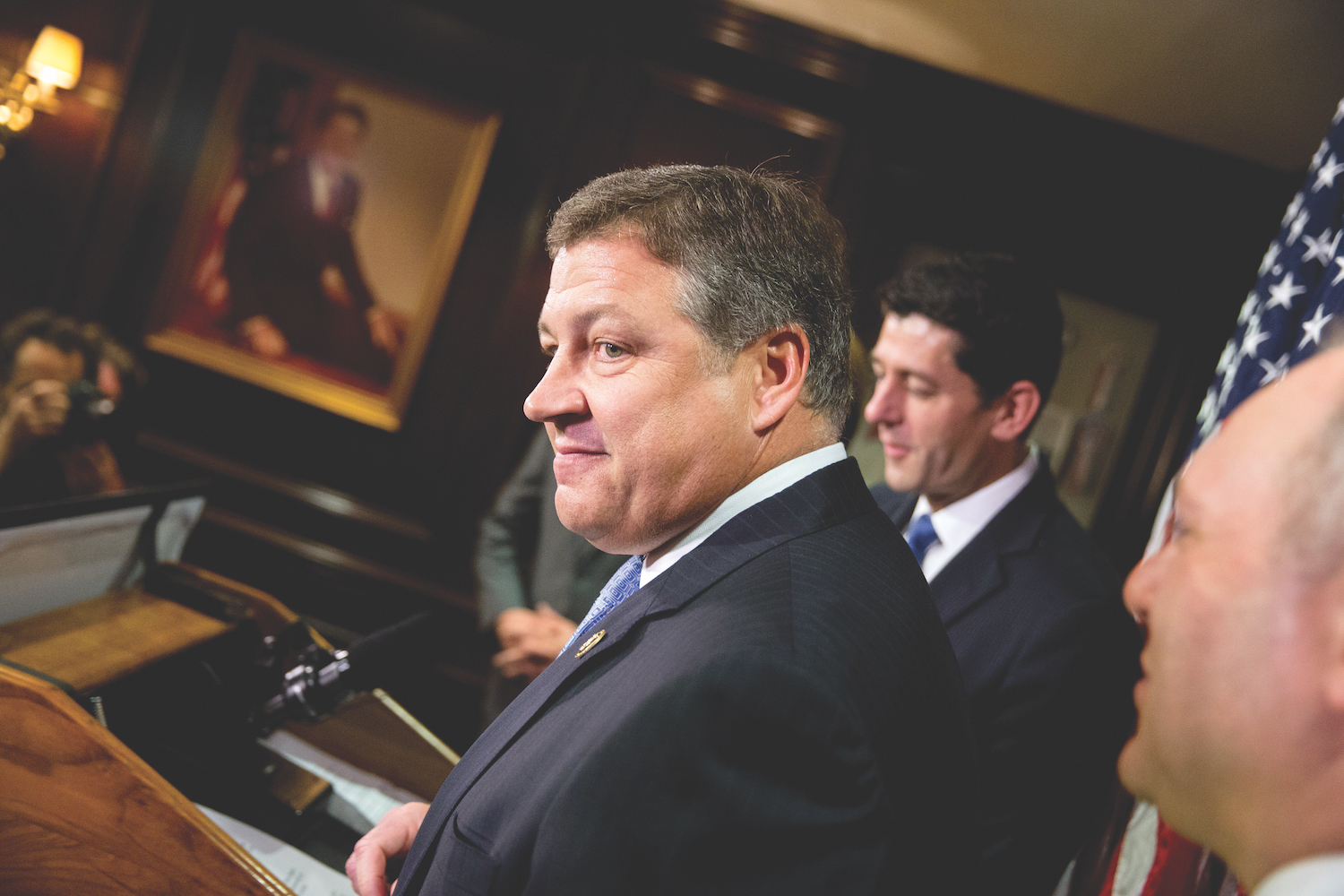
Privatizing air traffic control is also one of Shuster’s top priorities for the 115th Congress and something Trump has supported. (AP Photo)
T. Carter Ross, spokesman for the National Asphalt Paving Association, said his group would advocate for a long-term fix for the Highway Trust Fund.
The fund is the primary way the government pays for road improvement projects, primarily raising money through the collection of taxes on gasoline. The gas tax is 18.4 cents on a gallon of unleaded gasoline and 24.4 cents on a gallon of diesel fuel.
The Fixing America’s Surface Transportation (FAST) Act, signed by former President Barack Obama in 2015, fully funds the Highway Trust Fund until 2020, but a $100 billion shortfall is expected in the five years following 2020.
“We’ve been struggling for years now with a structural shortfall in the highway trust fund,” Ross said. “The amount of money that comes in from fuel taxes is not enough to meet the country’s needs.
“If they can address the structural shortfall in this funding, that would be fantastic.”
The American Society of Civil Engineers, in its 2017 report card for the nation’s infrastructure, said a 25-cent hike in the gas tax is necessary.
Other lobbyists are seeking more philosophical influence on the infrastructure bill, rather than advocating for certain types of projects.
Jack Gerard, president and CEO of American Petroleum Institute, said the oil industry has $1.15 trillion in energy infrastructure it’s ready to build “if given the opportunity to do so.”
Gerard said the culture and attitude of the Trump administration will matter more for energy infrastructure, namely pipelines, than a legislative package. He pointed to Trump’s orders to move forward with the Keystone XL and Dakota Access pipelines as examples.
But, Gerard said API would press for lawmakers to put regulatory reform into law to allow private infrastructure development to take place regardless of who is in the White House. Reform to the National Environmental Policy Act, which lays out the process for federal regulation of infrastructure projects, could be included in the bill to allow projects to be approved and built more quickly.
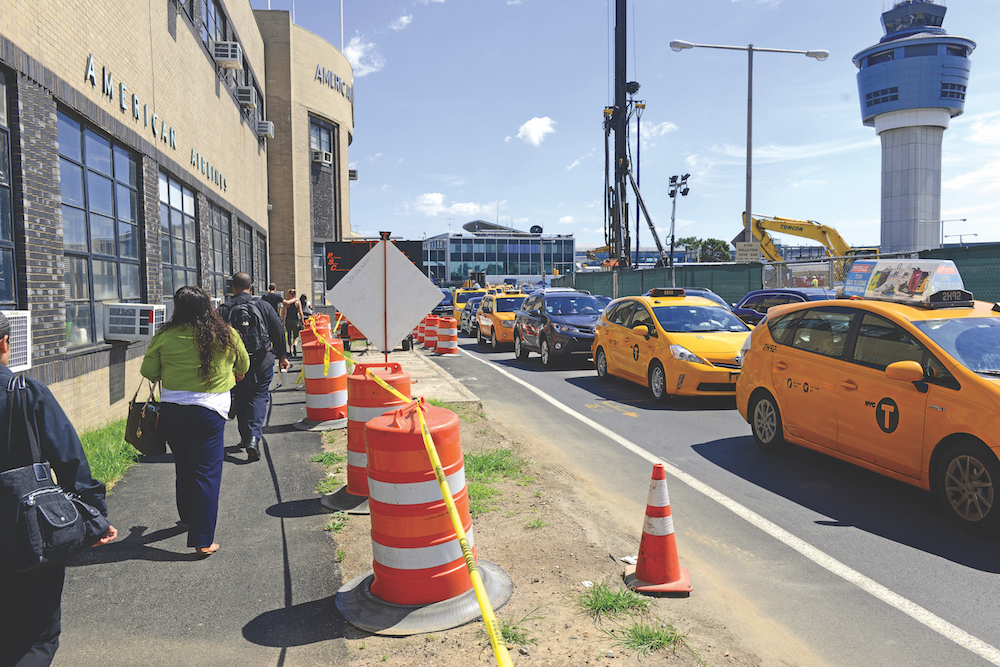
The Highway Trust Fund is the primary way the government pays for road improvement projects, primarily raising money through the collection of taxes on gasoline. (AP Photo)
“We see regulatory reform as a major driver toward infrastructure development … and that’s because the infrastructure is really the nexus or the tide that holds together the production of energy and consumption of energy,” Gerard said.
“We view all those areas as having an infrastructure component.”
Jessica Kahanek, press secretary at the American Association of Railroads, said the nation’s freight railroad industry is doing its own investment into the infrastructure it owns. The important thing for railroad companies isn’t money appropriated from the federal government, but a commitment not to over-regulate the industry.
“The priority is maintaining sensible policies that allow us to continue to make these critical investments,” she said in a statement. “Efforts to re-regulate our industry, which already leads the way in transportation safety and efficiency, would be both unwarranted and antithetical to the president’s infrastructure goals.”
Will it pass?
While the idea of an infrastructure package is popular on Capitol Hill, conservatives are concerned as to whether Congress can come up with a deal that pleases everyone enough to get Trump’s signature.
Sargent said the Heritage Foundation believes there’s no pressing reason to pass a massive infrastructure bill aside from the fulfillment of Trump’s campaign promises. That leads to a lot of lawmakers who want to get their priorities in the bill, but not a lot willing to lead and attach their name to a package that could be seen as wasteful.
Working out how to pay for the package and exactly what projects should be included is going to take a lot of work, Sargent said.
“On the campaign trail, it’s really easy and popular to say we’re going to fix our infrastructure and while we do it we’re going to create millions of jobs,” he said.
“But when you actually look at the federal government’s role in funding infrastructure and look at what the politics are … it’s a lot harder to push that through, especially if you want to be effective and avoid a lot of the mistakes we made in the past.”
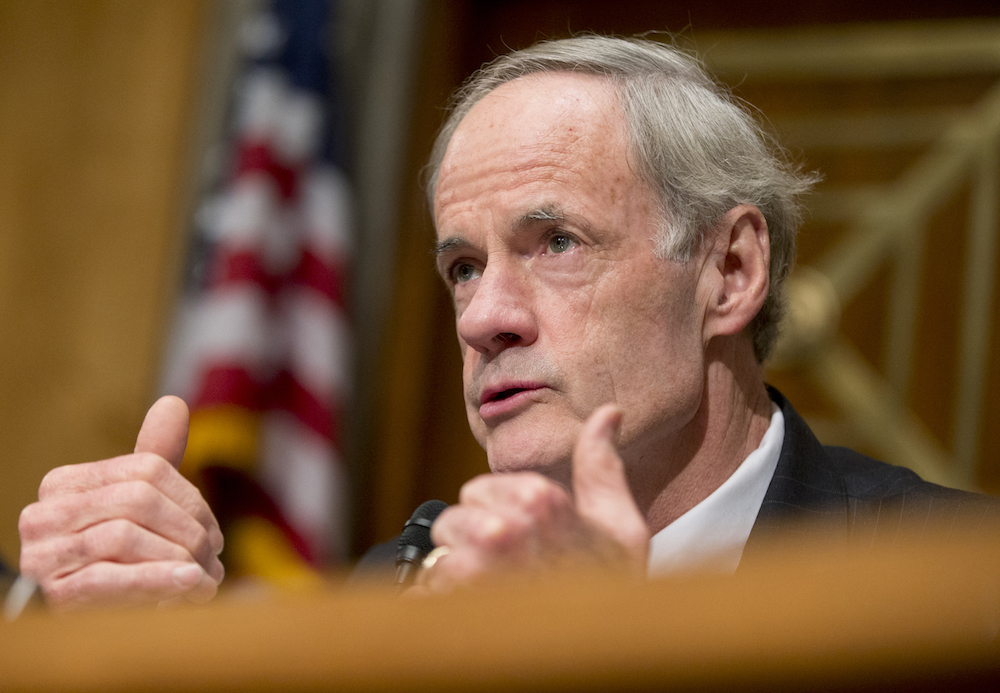
Barrasso said his relationship with Carper, and their shared desire to move forward on infrastructure projects, is a major positive for the eventual package’s chances in the Senate. (AP Photo)
Sargent said the internal Republican fight between fiscal hawks and the establishment could end up hurting an infrastructure bill’s chances, especially if there’s not a lot of Democratic support for the eventual package.
It’s a fine line to walk. Democrats are concerned about too much influence from the private sector, while fiscal conservatives are unlikely to go for a package that allows for $1 trillion in spending by the federal government that could grow the debt.
“It could die under its own weight in Congress,” Sargent said.
However, if done in a way amenable to Democrats, a massive infrastructure package could pick up enough votes from the left side of the aisle to get around obstinate fiscal conservatives.
Barrasso said his relationship with Carper, and their shared desire to move forward on infrastructure projects, is a major positive for the eventual package’s chances in the Senate.
“Our hearings have been very bipartisan in nature,” Barrasso said. “Sen. Tom Carper … has expressed his commitment to work with Republicans on this issue. I am optimistic that we can work together.”
Carper, known to be extremely enthusiastic about the possibility of passing more infrastructure upgrades, echoed Barrasso’s thoughts this month.
“Democratic senators continue to press for consensus on the issue of infrastructure, and it appears to me that we are one of the few Senate committees really talking about working on a bill in a bipartisan, comprehensive way,” he said in a committee hearing.
Cummings thinks Democrats and Republicans can work together, even if the fight over tax reform ends up being total political warfare. But, everyone is waiting to see how Trump unveils his proposal.
“It all depends on how Trump comes at it,” Cummings said.
That lack of certainty from the other end of Pennsylvania Avenue means there’s a collegial mood mixed with a sense of apprehension about the fine print.
“I’m sure with everyone involved, the devil will be in the details, but everyone’s more open right now,” said the House aide, “and I think it’s possible folks could come together on parts of this thing, and that could help move it.”
